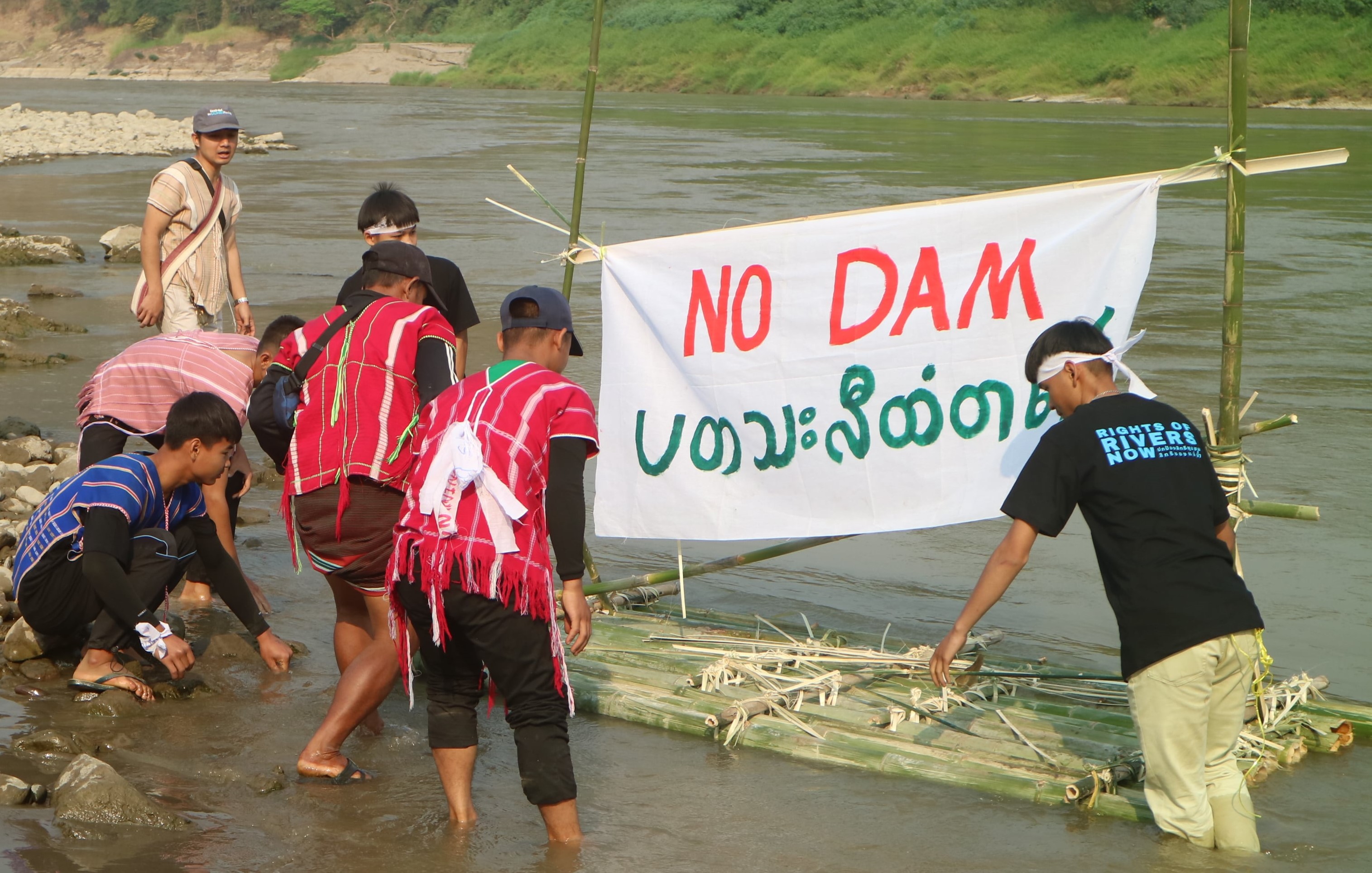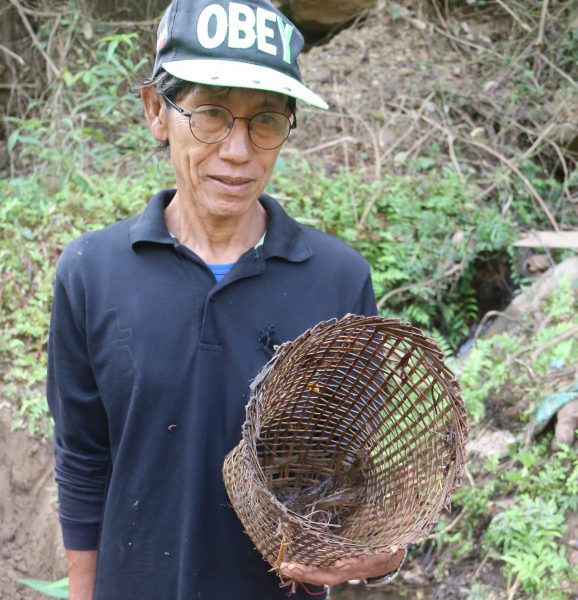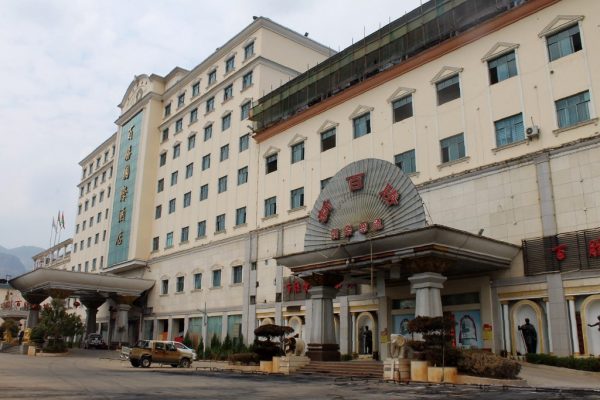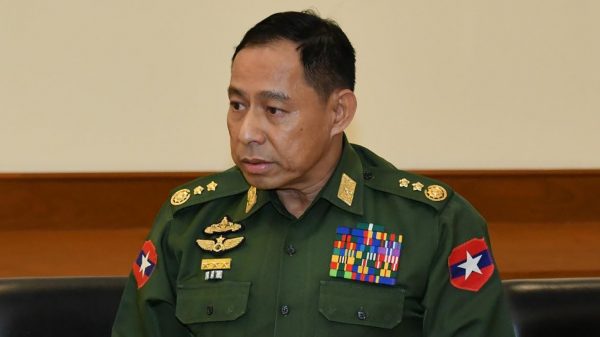Thai and Karen youth unite in battle against dams and dictators

More than 60 students from Thailand and Myanmar recently gathered at a riverside spot last week in Mae Hong Son’s Mae Sariang district, where the bullets only recently stopped flying, to protest harmful dam development and deadly state violence.
Speaking on behalf of the youngsters, Arina (no surname) said her group is demanding an end to not just dam construction but also attacks on its people by Myanmar’s military regime.
“Myanmar’s dictators must stop assaulting us and return power to the people,” she said, voicing her group’s demands.
The young activists were gathered at the border defined by the Salween River to mark the International Day of Action for Rivers and also spotlight the damage done by Myanmar’s coup-makers. Activists usually mark this special day on March 14 by focusing on river protection and the adverse impacts of dams.

However, as the civil war rages in Myanmar, the youngsters from neighboring countries chose to voice their concerns and push for peace.
Live bullets had whizzed around spot where they were gathered before armed forces under the Karen National Union (KNU) ousted junta troops and restored peace along most of the Salween River.
The Myanmar military killed over 1,600 civilians last year alone, with thousands more killed since it seized power in February 2021, according to the United Nations.
Thailand has agreed to open a humanitarian corridor to deliver aid to victims of the conflict in Myanmar border regions under the military regime’s control. However, concern is growing over a possible exodus of Myanmar civilians after the junta activated the military conscription law last month. Meanwhile, thousands have already fled to Thailand to escape the fighting.
“We also hope that the Thai government will provide humanitarian assistance to people from Karen State. They have sought refuge in Thailand and their human rights should be protected,” Arina said.
Young activists
The 60 school students were taking part in activities to mark the International Day of Action for Rivers, accompanied by over 100 adults who share the same spirit.
The kids attended a two-day camp to learn more about the situation in the Yuam, Ngao, Moei, and Salween river basins, where they live.

Hannarong Yaowalers, chair of the Foundation for Integration of Water Management, educated young participants about their constitutional right to protect their ways of life and natural surroundings. He also guided them on how to gather information, do research, and take action to protect rivers that are the lifeblood of their homelands.
“Thanks to the camp, I feel confident that if youth on both sides of the river are united, we will be able to protect the Salween,” said Zaw Nay Zaw, a Karen student from a Christian school in KNU territory.
However, the young activists also learned about the impacts that a dam project planned by the Electricity Generating Authority of Thailand and a Chinese firm will have on the Salween River in Thailand. The project is currently suspended because of unrest in Myanmar. But when peace is eventually restored, the project is likely to go ahead. Therefore, local youngsters are making preparations to protect the river, its resources and local ways of life.
“The river is our lifeline. As our elders have taught us, we need to protect water sources for drinking water. If we eat fish, we need to protect our river,” Arina declared with determination.
She added that the conservation efforts would not focus only on rivers, because it was also necessary to protect the environment from government projects like coal mines as well.
“If forests are affected, the ecosystem will be damaged. Ethnic ways of life, culture and community risk crumbling in that case,” said Arina, emphasizing the severity of environmental problems.
Next generation speaks out
Youngsters took center stage at this year’s event by Salween River after older activists decided to pass the torch to them in a ceremony last year.
After discussing threats to their local environment and ways of life, the young participants at this year’s event issued six demands.
Two are related to the conflict in Myanmar. The four others are: No more dam construction to disrupt river flows; no more government projects that damage communities and natural resources; scrapping of the environmental impact assessment (EIA) for the Yuam water-diversion channel project since it excludes public participation; and development of basic infrastructure, quality education, and public healthcare for people living in the Salween River Basin.
What’s next?
Lamithor Dangdanwimarn, a youth leader in Mae Hong Son’s Ban Tha Ta Fang, revealed that a second camp for youth living in the four river basins would be held next month.
“The camp will accept between 30 and 40 participants. We intend to expand our network because we are determined to continuously fight for conservation,” the teenager said.
This year, local activists will focus on the Yuam water-diversion channel project. Locals have been gathering data under the guidance of Chiang Mai University’s lecturer Asst Prof Dr Malee Sitthikriengkrai to oppose the EIA prepared by the Royal Irrigation Department.

Recently, a community research team explored the Yuam River for several days to gather data including visual recordings of the ecosystem. Much of the natural resources precious to the local economy and ways of life have been excluded from the EIA, according to the team.
For example, they recorded a rich natural habitat for fish. Aside from hosting as many as 14 fish species, the Yuam River also features beautiful islets, rocks and caves. They discovered the riverside is also a haven for bees while its small creeks are home to thriving populations of river prawns.
“We will present our data to the Central Administrative Court and ask it to scrap the project,” Singkarn Ruenhom, the leader of the research team said.
A boat trip along the Yuam River reveals the riverside is indeed abundant with life. If the project is implemented, this biological diversity is likely to be destroyed, say activists. Having lived within these natural riches all their lives, local activists are determined to fight hard to protect their ecosystem and ways of life.
By Pakpoom Pongbhai






